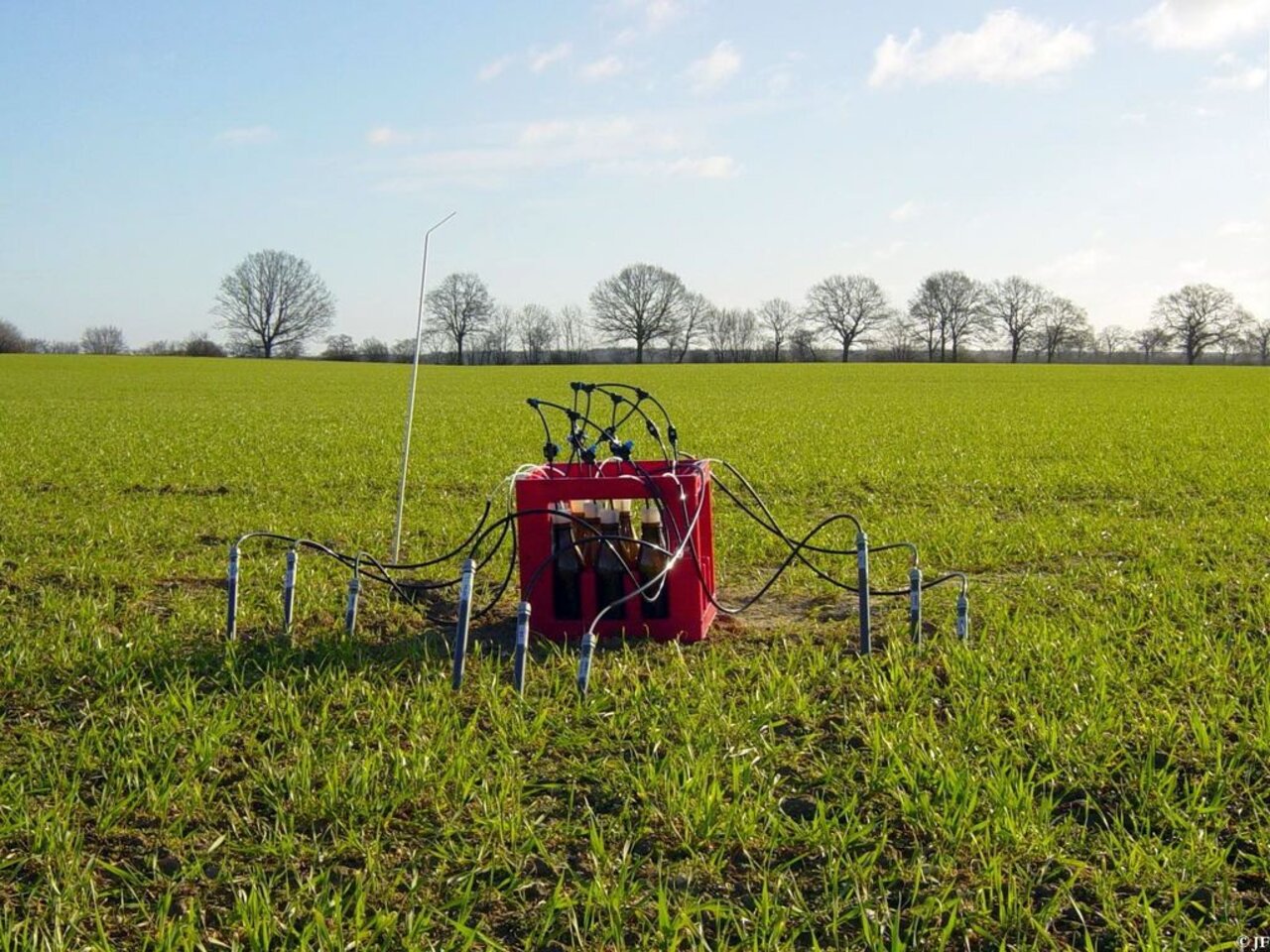Project
The future of grain legumes

Legume-supported cropping systems for Europe
Background and Objective
With this project we will deliver knowledge and technology for the optimal the use of legumes in European agricultural systems. We will promote partnerships needed to support the public policy outcomes sought. We will test, validate and deliver novel cropping systems by integrating the extensive set of existing case studies of the project partners.
Approach
The network of 18 case studies, in 12 countries, will be the focus of interaction with farmers, SMEs, other businesses, and policy makers. Outputs will include system-optimised cropping plans for each pedo-climatic region, input into existing farm-planning tools, local on-farm demonstrations, a socio-economic analysis. That will enable local economic assessment of cropping systems, and an ecological assessment of the effects of relevant farming system changes on greenhouse gas and nitrogen budgets, biodiversity and soil health from the farm to the continental scale.
The partners of the project will publish a book on legume-supported eco-efficient farming systems covering all aspects of the use of legumes in Europe. All research results and products will be put in the public domain.
Data and Methods
At the Thünen-Institute of Organic Farming, we cultivated different grain legumes in crop rotations of two managment systems (cash crop farm and dairy cow farm). We evaluated the environmental effects, in particular the risk of nitrate leaching into groundwater.
Furthermore a new cultivation system was developed, in a field trial, in which runner beans and scarlet runner beans were grown in mixture with maize.
Results
The nitrogen load was strongly influenced by the preceding crop. The average leaching rate of the dairy cow rotation (with application of slurry and farmyard manure) showed no significant differences in comparison to the cash crop rotation, where the only N input results from legume nitrogen fixation. But in two of three years the critical nitrogen load was almost exceeded after ploughing the biannual clover-grass, whereas the nitrogen load of the unploughed clover-grass always was below 5 kg NO3-N per hectare. These results indicate, that there is a high potential to reduce the risk of nitrate leaching by appropriate timing of soil cultivation. Another possibility to reduce leaching losses after the cultivation of grain legumes is to use intercropping systems instead of sole cropping.
The intercropping of maize and runner resp. scarlet runner beans was successfully established. We have sown the beans delayed after the emergence of maize and a weed control with a share hoe. The beans had a good development by a lower weed level and had a high yield level. Of the tested bean cultivars the runner bean ‘Tarbais’ and the Scarlet Runner Bean ‘Preisgewinner’ showed the highest percentage of yield. In comparison to the pure maize silage the crude protein content in the maize-bean-silage was increased by up to 30%. As yet there are no results for tolerance and digestibility of maize-bean silage.
Links and Downloads
Involved Thünen-Partners
Involved external Thünen-Partners
-
Scotland's Rural College (SRUC)
(Edinburgh, Großbritannien (inkl. Nordirland)) -
MTT Agrifood Research
(Helsinki, Finnland) -
Swedish University of Agricultural Science - SLU
(Uppsala, Lysekil, Schweden) -
University of Helsinki [FI]
(Helsinki, Finnland) - The James Hutton Institute (JHI)
(Dundee, Großbritannien (inkl. Nordirland)) -
Trinity College Dublin (TCD)
(Dublin, Irland) - Leibniz-Zentrum für Agrarlandschaftsforschung (ZALF) e.V.
(Müncheberg, Deutschland) -
Donal Murphy-Bokern [DMB]
(Lohne, Deutschland) - Aarhus University
(Aarhus, Tjele, Dänemark) -
Agricultural University of Athens (AUA)
(Athen, Griechenland) - Institute of Soil Science and Plant Cultivation (IUNG-PIB)
(Pulawy, Polen) - CIRAD (Centre de Recherche Agronomique pour le Développement, Agricultural Research Centre for International Development)
(Montpellier, Frankreich) -
University of Cordoba (UCO)
(Cordoba, Spanien) -
Università Mediterranea di Reggio Calabria (UDM)
(Reggio Calabria, Italien) -
Agricultural University of Romania (NARDI)
(Fundulea, Rumänien) - The Irish Agriculture and Food Development Authority - TEAGASC
(Carlow, Fermoy, Johnstown, Irland)
Duration
3.2010 - 2.2014
More Information
Project funding number: 245216
Funding program: FP7 (hat sich erübrigt, bitte Spezifikation auswählen)
Project status:
finished
Publications
- 0
Böhm H, Dauber J, Dehler M, Amthauer Gallardo DA, Witte T de, Fuß R, Höppner F, Langhof M, Rinke N, Rodemann B, Rühl G, Schittenhelm S (2020) Fruchtfolgen mit und ohne Leguminosen: ein Review. J Kulturpfl 72(10-11):489-509, DOI:10.5073/JfK.2020.10-11.01
- 1
Böhm H (2015) Ertragsleistung, Proteingehalte und -erträge von Saatwicken im Vergleich zu Erbse, Ackerbohne und Lupine. In: Häring AM, Hörning B, Hoffmann-Bahnsen R, Luley H (eds) Beiträge zur 13. Wissenschaftstagung Ökologischer Landbau "Am Mut hängt der Erfolg: Rückblicke und Ausblicke auf die ökologische Landbewirtschaftung". pp 66-67
- 2
Böhm H (2014) Unkraut unterdrückende Wirkung von Saatwicken in Reinsaat und im Gemengeanbau mit Hafer in Abhängigkeit von Aussaatstärkenverhältnis und Wickensorte. Julius Kühn Arch 443:493-497, doi:10.5073/jka.2014.443.061
- 3
Böhm H (2013) Anbau der Saatwicke (Vicia sativa L.) im Gemenge mit Hafer - eine Alternative in der Körnerleguminosenproduktion? Mitt Gesellsch Pflanzenbauwiss 25:80-81
- 4
Fischer J, Böhm H (2013) Ertrag und Futterwert von Mais-Bohnen Gemengen als Ganzpflanzensilage in der Milchviehfütterung. In: Neuhoff D, Stumm C, Ziegler S, Rahmann G, Hamm U, Köpke U (eds) Beiträge zur 12. Wissenschaftstagung Ökologischer Landbau : Ideal und Wirklichkeit: Perspektiven ökologischer Landbewirtschaftung . Berlin: Köster, pp 470-471
- 5
Fischer J, Böhm H (2013) Mais-Bohnen-Gemenge: Eintopf für die Kühe? Top Agrar(10):68-71
- 6
Fischer J, Böhm H (2012) On-farm evaluation of nitrogen leaching rates from organic crop rotations under consideration of the previous crop, with special emphasis on legumes. In: Stoddard FL (ed) 12th Congress of the European Society for Agronomy : abstracts ; Helsinki, Finland, 20-24 August 2012. Helsinki, pp 238-239
- 7
Fischer J, Böhm H (2012) Vergleichende Fruchtfolgeanalyse zur Nitratverlagerung im Ökologischen Landbau unter besonderer Berücksichtigung der Vorfrüchte. Mitt Gesellsch Pflanzenbauwiss 24:124-125
- 8
Pappa VA, Rees RM, Baddeley JA, Pristeri A, Böhm H, Stoddard FL, Watson CA (2011) The use of intercrops in rotations. Asp Appl Biol 113:1-7
- 9
Böhm H (2010) Heimische Körnerleguminosen - Grundlage für Ackerbau und Tierernährung. Lebendige Erde 61(4):20-23
- 10
Böhm H (2009) Körnerleguminosen - Stand des Wissens sowie zukünftiger Forschungsbedarf aus Sicht des Ökologischen Landbaus. J Kulturpfl 61(9):324-331

![[Translate to English:] [Translate to English:]](/media/_processed_/8/e/csm_Bildschirmfoto_2021-03-03_bearb_fc48ac88bf.jpeg)
![[Translate to English:] [Translate to English:]](/media/_processed_/8/e/csm_Bildschirmfoto_2021-03-03_bearb_ba3ec0e9d7.jpeg)






